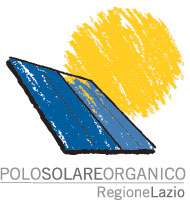| History |
|
The mass of villa Mondragone, towering on a hill 416 m. above sea-level, lies in the area of the villas which take their name from the ancient town of Tusculanum, between the town of Frascati and that of Monte Porzio Catone (to which it belongs). The estate consists of an 18-hectare lot. In the middle, in a dominating position and with a magnificent view torwards Rome, rises the imposing building of the villa of about 80,000 cubic metres. The architectural history of villa Mondragone starts in 1567 when young cardinal Marco Sittico Altemps, beloved nephew of pope Pius IV, buys a villa from Ranuccio Farnese, cardinal of Sant’Angelo. This villa, which previously had been property of cardinal Ricci of Montepulciano, was known as Angelina after the title of cardinal Ranuccio Farnese. This building was renamed villa Tusculana and later, after the building of the present villa Mondragone, became known as villa Vecchia (the Old Villa). At first cardinal Altemps decides only to enlarge the already existing villa Tusculana under the superintendence of the architect Jacopo Barozzi of Vignola aided by Martino Longhi of Viggiù. Once this work was completed, in 1571, cardinal Ugo Boncompagni, who a few months later became pope Gregorius XIII, was a guest at the Villa for a long time. It is this pope himself who suggests building a new grand villa on the hillock overlooking the villa Tusculana taking advantage, as a base, of the villa of the Quintili (Roman consuls in 151 A.D.) It was designed by Martino Longhi. The name Mondragone refers to the heraldic dragon which occupies the central position in the coat of arms of the Boncompagni family and which is represented in various parts of the villa and garden. In 1613 cardinal Scipione Borghese, nephew of pope Paul V, buys villa Mondragone and villa Tusculana together with other properties of the duke Gian Angelo Altemps, nephew of cardinal Marco. Between 1616 and 1618 significant works of enlargement of villa Mondragone are documented. These works are carried out under the direction of the Flemish architect Jan van Santen, better known as Giovanni Vasanzio, whom cardinal Borghese considers his trusted designer. These interventions affect both the block enlarged with the gallery between the Casino of Longhi and the Retirata, the small residential building constructed for the son of cardinal Altemps, and the external part with the great Garden, the Portico, the Water Theatre and the large quadrangular courtyard which brings to mind the Cour d’Honneur of the royal dwellings in France. In 1866 the Jesuit Order buys the villa which at first became the international headquarters of the Ghislieri college and later a boarding school of a very high social standard. Since 1981 it belongs to the University of Rome Tor Vergata. The restructured section of the villa includes the “Sala degli Svizzeri”, (the conference room for 150 people), six meeting rooms, the library, the gallery for exhibits, the guest house and cafeteria. The structure is currently the seat of prestigious conferences. |



